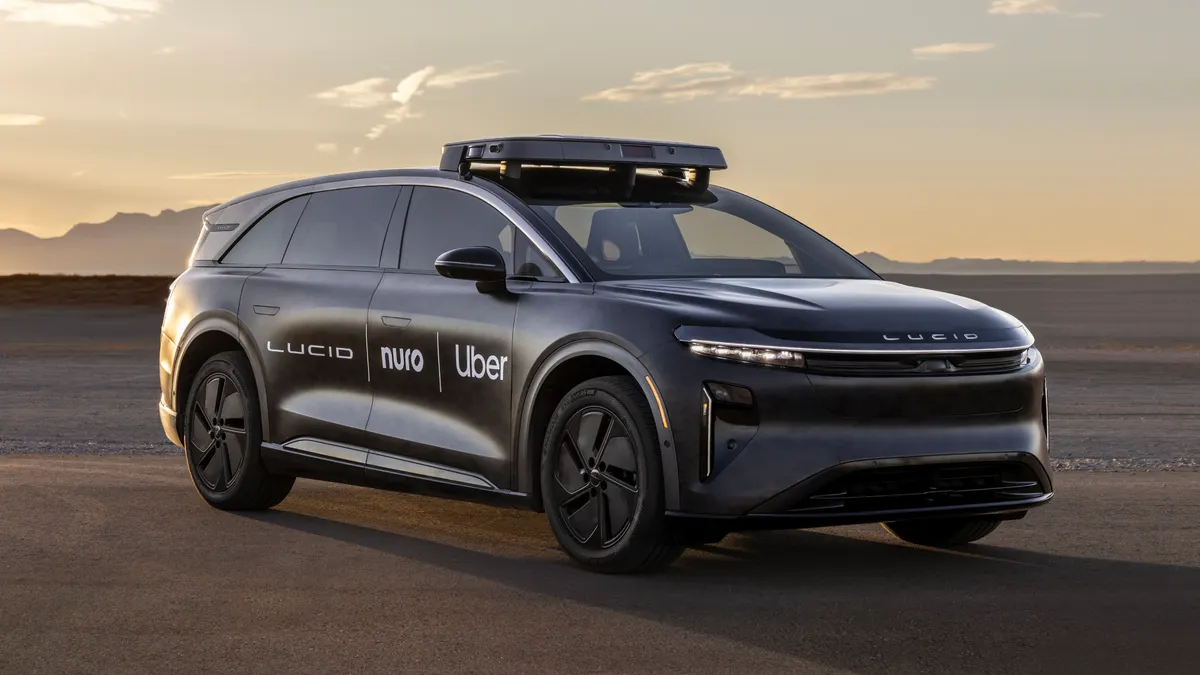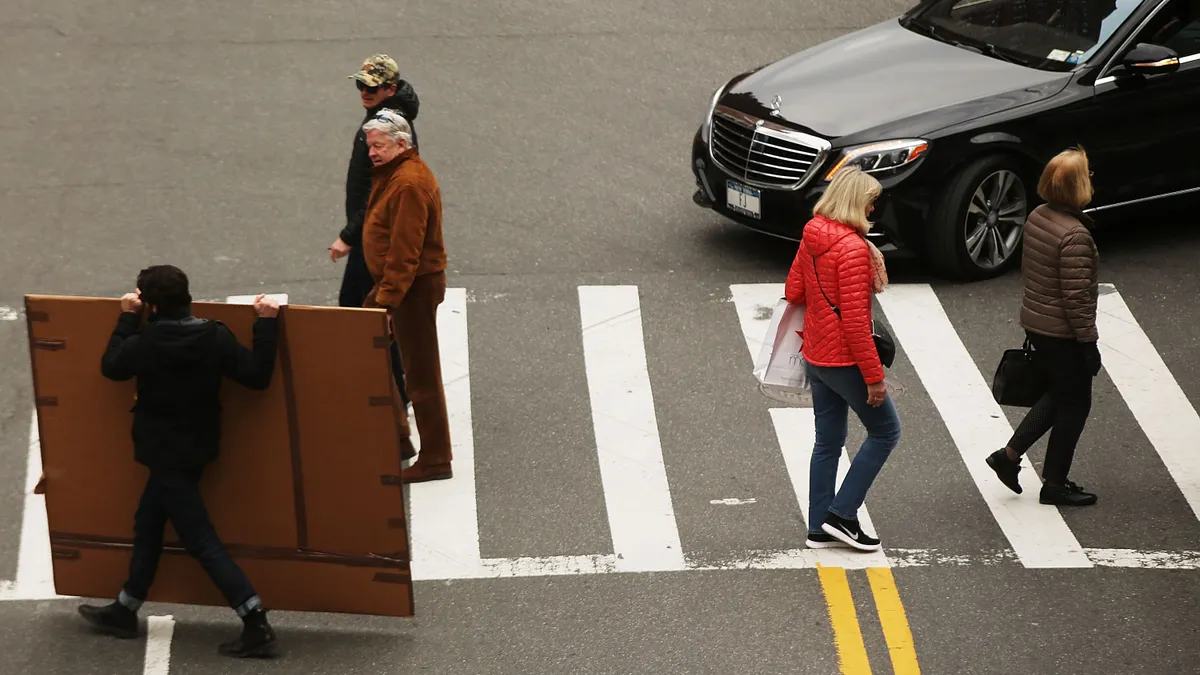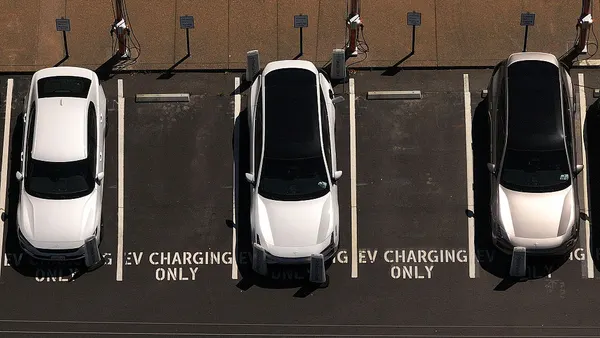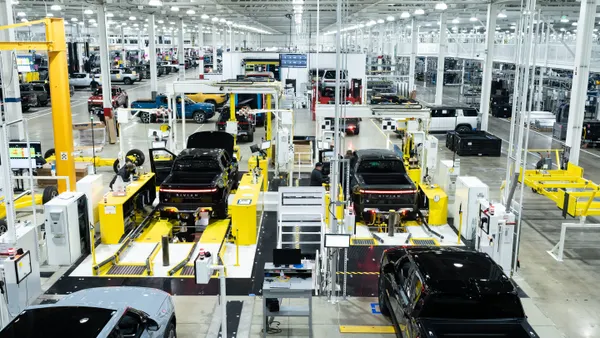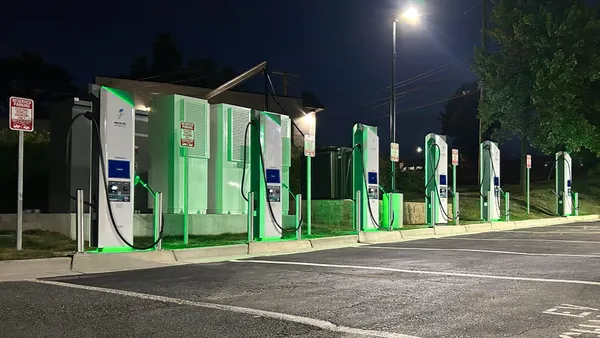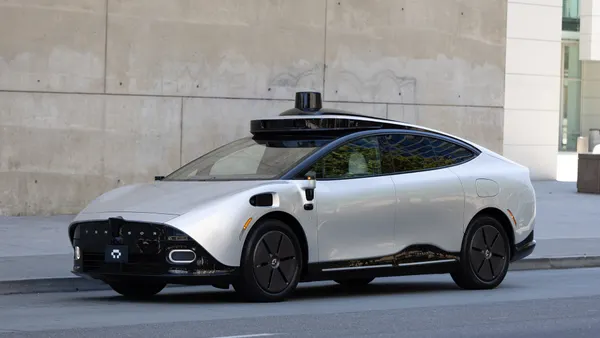Dive Brief:
- Lucid Group announced a new collaboration with Uber and autonomous driving technology developer Nuro to deploy a minimum of 20,000 self-driving Lucid Gravity SUVs on Uber’s ride-share platform, according to a July 17 press release.
- The luxury electric SUVs will be equipped with Nuro’s “Nuro Driver” autonomous driving system and will be deployed over the next six years in dozens of Uber’s global markets, per the release.
- The vehicles will be owned and operated by Uber or by one of its third-party fleet partners. The first of the Lucid Gravity robotaxi deployments is planned for a major U.S. city next year.
Dive Insight:
As a software-based EV, the electrical and control architecture of the Lucid Gravity make it an ideal vehicle platform to install the Nuro Driver and scale deployment, according to the release. In addition, the Gravity’s 450-mile EPA estimated range means less frequent downtime is needed for charging, which will help Uber to maximize the vehicles’ availability on its platform.
“This investment from Uber further validates Lucid's fully redundant zonal architecture and highly capable platform as ideal for autonomous vehicles, and our industry-leading range and spacious well-appointed interiors, as ideal for ridesharing,” said Lucid interim CEO Marc Winterhoff. “This is the start of our path to extend our innovation and technology leadership into this multi-trillion-dollar market.”
Nuro was co-founded in 2016 by former Google employees Jiajun Zhu and Dave Ferguson. Prior to launching Nuro, Zhu, who serves as CEO, was a founding member of Google’s self-driving program, which later spun off as Waymo, while Ferguson was a principal engineer. Google, Japan-based Softbank and other top venture capital firms are among Nuro’s investors.
Also as part of the partnership, Uber is investing $300 million in Lucid via a private placement, according to an SEC filing. However, Uber plans to make “multi-hundred-million dollar investments” in both Nuro and Lucid, according to the release.
The Nuro Driver technology stack includes automotive-grade hardware and AI-powered software. The vehicle sensor suite includes a combination of solid-state lidar, cameras and radars for safe navigation.
Nuro’s next-generation platform uses Nvidia Drive Thor automotive SoCs that delivers up to 2,000 teraflops of compute performance. It allows Nuro to streamline the platform for enhanced scalability and reduced costs. The system integrates an end-to-end AI model to quickly adapt to new driving environments and different vehicle platforms.
The Nuro Driver will enable the Lucid Gravity to operate at SAE Level 4 autonomy on the Uber platform, meaning that vehicles can operate with no human intervention or oversight within predefined geofenced areas. According to Nuro, its automated driving system can respond to changing road and traffic control conditions in real-time, ensuring optimal performance in complex urban environments.
“We believe this partnership will demonstrate what’s possible when proven AV technology meets real-world scale,” said Zhu, in the release.
All of the necessary hardware for automated driving will be preinstalled on the Lucid Gravity SUVs during assembly, while Nuro’s software will be activated once the vehicle is commissioned by Uber and deployed on its network, per the release.
The first Lucid Gravity robotaxi prototype is currently being tested on a closed circuit at Nuro’s Las Vegas proving grounds.
In addition to its collaboration with Nuro, Uber is also working with rival Waymo to deploy robotaxis on its ride-hailing platform. Uber announced its multi-year strategic partnership with Waymo in May 2023. Last September, the two companies announced plans to deploy self-driving vehicles on the Uber platform in Austin, Texas, and Atlanta, with additional U.S. cities planned in the future.
Waymo also plans to build its own robotaxis for its “Waymo One” ride-sharing service as part of a similar partnership with Tier 1 supplier Magna International. In May, Waymo and Magna announced plans to convert 2,000 electric Jaguar I-PACE SUVs into robotaxis and add them to Waymo’s platform.



